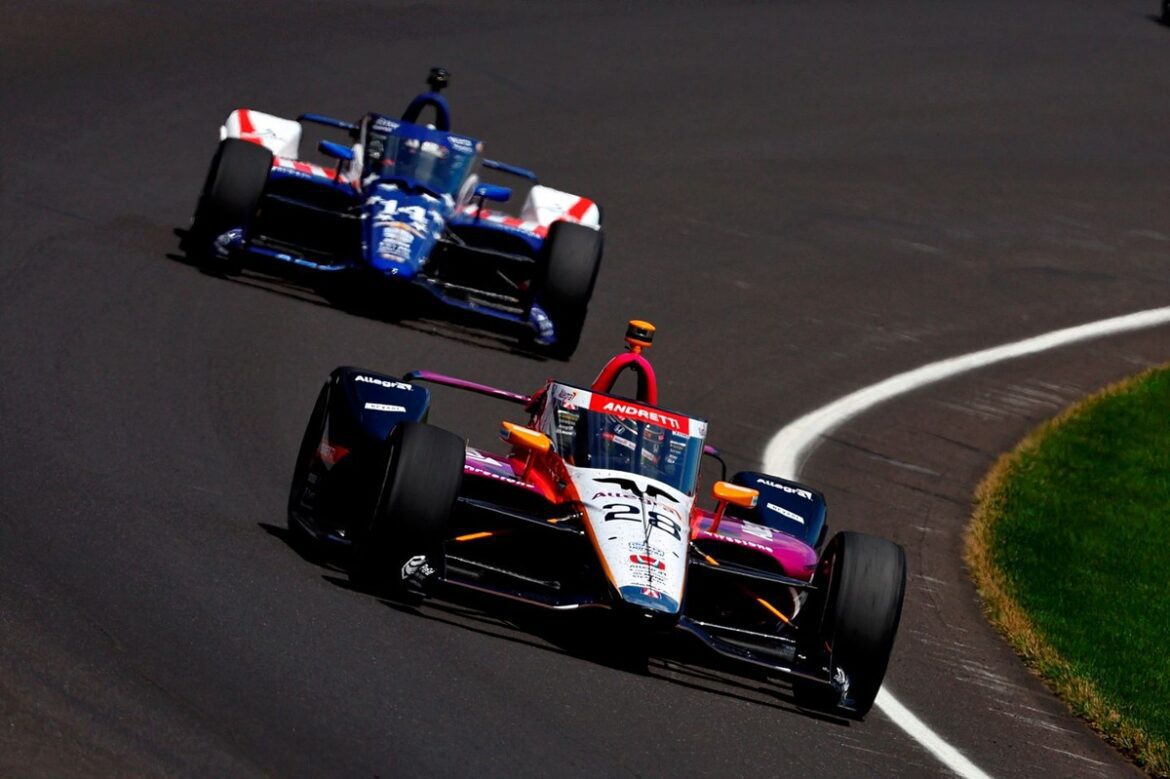Post-Race Developments at the Indy 500: Technical Violations and Their Impact on Results
The excitement surrounding the Indianapolis 500, one of the most prestigious events in motorsport, has recently taken a controversial turn. Following the conclusion of the 109th running of the race, it was revealed that two cars from Andretti Global and one from Prema Racing did not pass their post-race technical inspections, leading to significant changes in the official results.
Details of the Violations
On a dramatic Monday following the race, IndyCar officials announced that the No. 27 car driven by Kyle Kirkwood, the No. 28 car piloted by Marcus Ericsson, and Callum Ilott’s No. 90 Prema Racing vehicle all faced disqualifications due to regulatory breaches. The scrutiny of these cars was part of the series’ commitment to maintaining fairness and integrity in racing.
The Andretti Global cars, specifically the No. 27 and No. 28, were found to have made unauthorized modifications to their Energy Management System (EMS) covers. These modifications involved the use of unapproved spacers and parts at the cover-to-A-arm mounting points. According to IndyCar’s official statement, such alterations provided these vehicles an unfair advantage in terms of aerodynamic efficiency. The series emphasized that maintaining strict adherence to technical regulations is vital for the competitive balance of the sport.
Meanwhile, Prema Racing’s No. 90 car encountered issues with its front wing. The team failed to meet the specified endplate height and location requirements, which are crucial for the vehicle’s aerodynamic performance. Specifically, the left endplate height did not comply with the set standards, as outlined in the IndyCar regulations. These rules are designed to ensure that all components of the race car operate within the parameters established by the governing body.
Repercussions for the Teams
As a result of these infractions, all three vehicles were relegated to the back of the official Indy 500 standings. This decision drastically altered the outcome of the race. Marcus Ericsson, who originally finished in second place, was demoted to the 31st position. Kyle Kirkwood, who crossed the finish line in sixth, was moved to 32nd place, and Callum Ilott fell from 13th to 33rd in the final tally.
In addition to the repositioning in the standings, each team faced a hefty financial penalty of $100,000. The competition managers for both Andretti Global and Prema Racing will also serve a one-race suspension, which is set to take effect during the upcoming race weekend in Detroit. This suspension underscores the seriousness with which IndyCar takes adherence to its technical guidelines and the penalties associated with violations.
Industry Reactions and Future Implications
As of now, neither Andretti Global nor Prema Racing has issued public statements regarding the penalties imposed on their teams. The lack of immediate commentary suggests that both teams may be evaluating their options or preparing for a more detailed response in the near future. The fallout from these violations not only affects the specific teams involved but also raises questions about the integrity of the race and the measures in place to ensure compliance among all competitors.
The repercussions of this incident could have lasting effects on both teams’ reputations and their standing within the IndyCar series. Teams are expected to adhere strictly to technical specifications, and breaches can lead to a loss of trust among fans and sponsors alike.
The Importance of Compliance in Motorsport
In motorsport, technical regulations serve as the foundation for fair competition. The rules are designed to level the playing field, ensuring that performance differences are based on driver skill and team strategy rather than unauthorized modifications. The recent events at the Indy 500 highlight the critical importance of compliance and the rigorous checks that governing bodies must implement to uphold the integrity of the sport.
The disqualifications following the Indy 500 are a reminder of the high stakes involved in racing. Teams invest significant resources into developing competitive cars, and any advantage gained through technical violations can lead to serious consequences. The penalties imposed on Andretti Global and Prema Racing serve as a warning to all teams in the series that adherence to regulations is non-negotiable.
Conclusion
As the motorsport community reflects on the aftermath of the Indy 500, the focus will likely shift to the upcoming race schedule and how these developments will influence the teams’ performance moving forward. The commitment to maintaining fair competition will continue to be a central theme in IndyCar, as teams strive to balance innovation with compliance.
In summary, the fallout from the Indy 500 serves as a crucial learning moment for all involved in the sport. Ensuring that technical regulations are followed not only protects the integrity of the race but also enhances the overall experience for fans, teams, and drivers alike. As the season progresses, the implications of these penalties will undoubtedly resonate throughout the IndyCar series, influencing strategies and approaches to vehicle design and compliance in future races.
